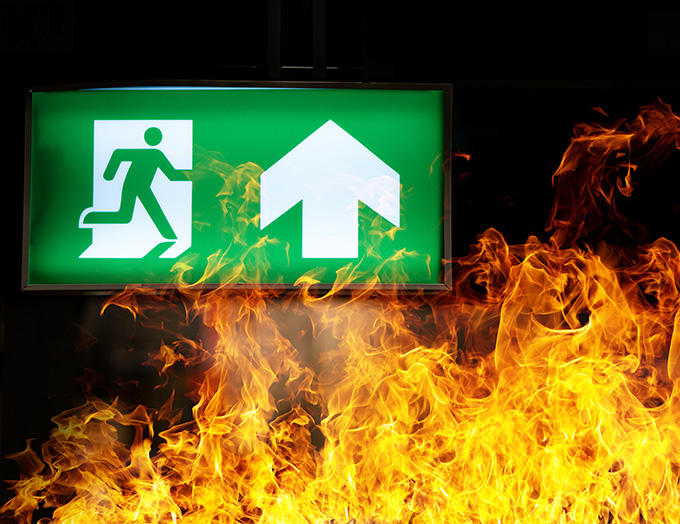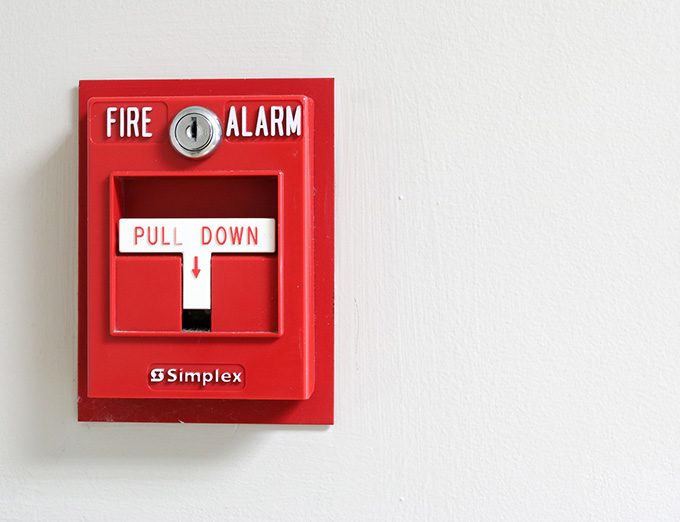
Guest OpEd by Zack Zarrilli, retired firefighter/paramedic and founder of SureFire CPR
A whiff of smoke, a door handle that’s warm to the touch, or a distant alarm––signs of a fire in a hospital are a call to action.
In any setting, a fire is an incredibly dangerous thing.
However, being in a hospital presents a new set of challenges and concerns. Every second counts and so it is crucial that everyone on the scene takes smart, rapid steps towards safety.
While we hope to never have to use it, knowledge of proper hospital fire safety techniques is absolutely essential for any hospital employee.
Or, as a potential civilian in a hospital setting, it can also be helpful to understand what the employees are doing and how you can best help.
If you are aware of fire safety protocols and procedures, you are all the more likely to keep yourself and others free of harm.
(In April a hospital fire in Iraq left 82 people dead, many being treated for symptoms of coronavirus. Courtesy of EuroNews and YouTube. Posted on Apr 25, 2021.)
Why Is Fire Safety Training Important?
A study published by the U.S. Fire Administration found that within just a two-year period, around 5,700 medical facility fires were reported.
They were caused by a variety of sources, from larger structure fires to more contained kitchen incidents. No matter the size or the spread of the flames, however, a hospital fire needs to be taken seriously in order to protect everyone on site.
In the event of a fire, a foundation of fire safety training could mean the difference between life and death.
A hospital fire safety course prepares you to act quickly and effectively in a stressful emergency situation.
From how to use a fire extinguisher, to the different types of fires, to safe evacuation, a hospital fire safety class equips you with both the practical skills and technical knowledge you need.
What Are the Four Principles of Fire Safety?
If you enroll in a fire safety training course, you’ll also likely learn the Four Principles of Fire Safety. This set of tenets allow for optimal fire response and maximum safety.
When the alarm is roaring and panic is spreading, keeping four easy-to-remember steps in mind can help prevent overwhelm.
The Four Principles of Fire Safety were created to help make fire safety in hospitals simple.
The pillars are not necessarily completed in order like a checklist. Instead, this list is used as guidance or a general action plan.
Sometimes, it is safer to complete one before the other, and other times they even might occur simultaneously. Hospital employees will use their discretion and make educated decisions based on the circumstances to help keep everyone as safe as possible.
(On December 8, 1961, the casual disposal of a cigarette spread raging flames and deadly smoke, as an explosion and fire tore through the 9th floor of Hartford Hospital, killing 16. The Connecticut tragedy would have an impact nationwide, changing hospital, educational, and hotel construction forever. Courtesy of Connecticut Public and YouTube.)
1. Life Safety
-
As with any emergency, the first priority is to protect both ourselves and those around us.
-
In the event of a fire, hospital employees should aid patients in their vicinity.
-
First, the hospital employee will search for any obstacles, such as an I.V. or an oxygen tank, that may need to be disconnected or removed in order to move the patient.
-
If the patient is ambulatory, they will be guided to a safer location.
-
If a patient is unable to move on their own, the employee might transport their bed or employ an emergency carry.
2. Notification

-
It is also important to let others know about the emergency.
-
Effective communication and quick alerts can ultimately save lives and minimize damage in the hospital.
-
Notification of the fire situation could take many forms.
-
The closest fire alarm should be pulled and the 24-hour hospital emergency telephone line should be called so that the fire department and first responders are notified.
-
Additionally, many hospitals rely on a verbal warning called “code red”.
-
This warns hospital employees in a discreet way so that they can start taking action before panic spreads among patients and visitors.

3. Extinguish
-
Whether or not a hospital employee should take steps to extinguish the fire depends on a few factors, including how large the fire is and whether they are certified to use a fire extinguisher.
-
If the fire is small, if it can be extinguished in a quick and safe manner, or if a life is in immediate danger, an employee may try to extinguish it themselves.
-
However, if the employee is untrained on fire extinguisher use, if the fire is spreading quickly, or if it is unsafe to remain in the area due to smoke or heat, it’s best to wait until first responders arrive.
4. Relocate/Evacuate

-
Moving to a safer location is also an important component of fire safety.
-
Sometimes, this involves evacuating the building completely, while other times it is best to move to a different wing, floor, or department.
-
Ideally, hospital employees should try to move themselves and their patients through at least one set of fire doors.
-
To avoid the chaos of overcrowded hallways, hospital employees will develop an evacuation priority order so that those in immediate danger can be moved to safety first.
While these principles were created for hospital use, they can apply to nearly any workplace or setting.
Taking some time now to familiarize yourself with fire safety standards is a great way to prepare for the unexpected.
(Learn More. Courtesy of SureFire CPR and YouTube.)
SureFire CPR serves all of Los Angeles, offering group training at their industry leading training facilities in Orange County and Riverside County, or they can travel to your home or business for onsite training and CPR certification in Southern California for those wishing to learn at their home or business.
To Learn More or Register Online go to www.SureFireCPR.com, or call now at 888-277-3143.
About the Author

Zack Zarrilli is a retired firefighter / paramedic and the founder of SureFire CPR.
His company has ranked in the Top 10 of all Small Businesses to work for in Orange County every year since 2014.
SureFire CPR’s team of professional firefighters, nurses, paramedics, and EMTs trains people how to “Be the Difference” between life and death by providing lifesaving training to hospitals, schools, businesses, and families to all Southern California.
AST strives to meet a 3 STAR trustworthiness rating, based on the following criteria:
- Provides named sources
- Reported by more than one notable outlet
- Includes supporting video, direct statements, or photos

















